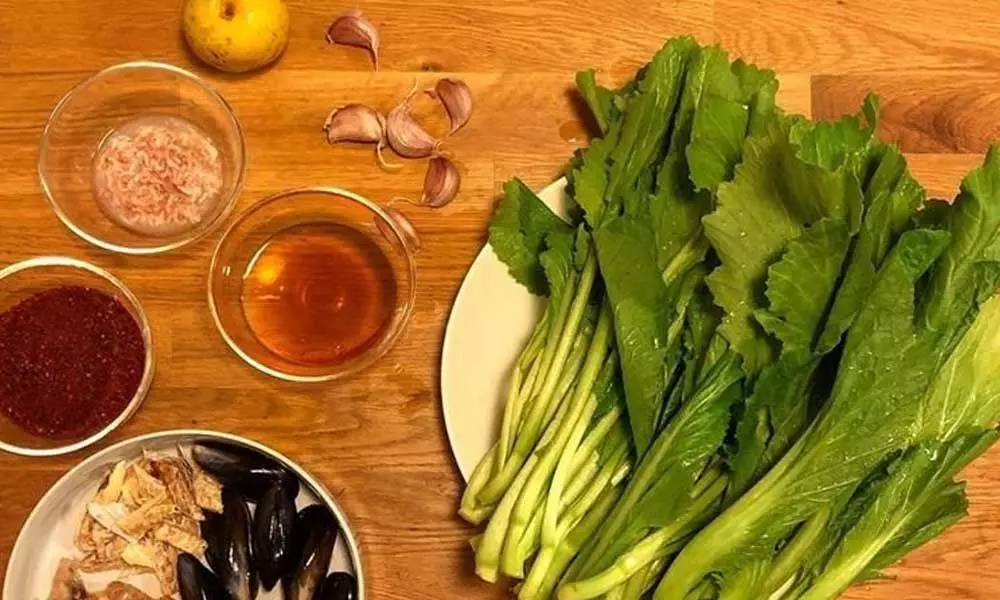Embrace at-home fermentation to maximise nutrition

In order to fully enjoy the benefits of this preservation method, it is advisable to consume raw fermented foods rather than cooked
2.7 billion people globally have been called on to stay home; this includes 130 crore Indians in the wake of the pandemic. The entire family can get involves in activities together-- like the long forgotten, organic and natural method of cooking: fermentation.
The concept of fermentation becomes more apt a current times when we are not spoilt for plenty, and need to make full use of current stocks. The technique has lately regained its popularity, mainly driven by anti-waste trends and healthy cooking concepts. It us one of the oldest method of food preservation, and very popular in tribal areas of the country mostly, the North East.
Lacto-fermentation takes place when lactic acid bacteria transform carbohydrates into lactic acid. Food processed in this manner to obtain a more or less pronounced tart flavour depends on the length of fermentation. The process being a natural one is cost-effective and involves no cooking; allows one to obtain food of high nutritional quality, with excellent health benefits, in particular for the digestive system. It is also a good alternative to freezing and sterilization.
Lacto-fermentation can be used to preserve a wide variety of vegetables and even certain types of fruit. For example, in French gastronomy, one can mention sauerkraut. More exotic examples include kefir, Kimchi, soy sauce, black tea or pickles.
Health benefits of lacto-fermentation include:
♥ This preservation method does not use heat, therefore the enzymes in food are not altered and the minerals are better assimilated upon consumption.
♥ The high enzyme content allows "breaking" the larger molecules that the body usually takes longer to digest, making the product easily digestible.
♥ The number of vitamins and lactobacilli is increased: bacteria produce vitamins during the fermentation process and these foods are an excellent source of probiotics, necessary for the proper balance of the intestinal flora.
♥ The concentration of nitrites, nitrates and pesticides harmful to health is reduced.
♥ For intolerant people particularly, the fermentation obtained in the making of sourdough bread decreases the phytic acid content of cereals used.
In order to fully enjoy the benefits of this preservation method, it is advisable to consume raw fermented foods rather than cooked, as it allows for the enzymes and vitamins to be entirely conserved. On the other hand, with fibers, it is advisable to avoid abruptly consuming a large quantity of lacto-fermented vegetables in order to allow the body time to get accustomed to these new foods.
Expert opinion:
"Open-mindedness and curiosity are an integral part of our job as a cook. Fermentation is an old technique used for centuries, and recently brought up to date by Nordic Chefs, and it questions us! Always on the lookout for what is happening around us and sensitive to the questions of our students and visitors, this desire to try new things and create a new course therefore comes mainly from the inspirations of the in-house team," says Cédric Barbarat, Executive Chef at École Ducasse - Paris Studio.
"We started by bringing jars from home. We fill them, question, observe and start over, not always in agreement among us... but that pushes us to work even harder. And then we also continue at home, with our family. There is nothing better than doing this with a child, always curious about the goal. Then it's time for the tasting comes and it's a total surprise: incredible textures and new tastes to introduce into our daily lives and that of our clients," adds chef Barbarat.
Step-by-step guide
Take vegetables, wash them, cut them into pieces or grate them, and put them in a clean glass jar. Cover with brine: salt water where there is usually 30g of salt per liter of water. You can add flavourings (parsley, tarragon, bay leaf, thyme, dill, etc.) or spices (star anise, cinnamon, ginger, etc.) to your taste.
During the fermentation process, lactic acid bacteria develop, thanks to anaerobic conditions and the presence of salt: this stage is called pre-fermentation. It is then left to ferment at room temperature for 3 days (between 18 and 25°C.). A duration of 3 days is generally recommended but it can be slightly less (2 days) or more depending on your preference for acidity.
The jars used must be able to close tightly, those with a rubber seal are perfectly suitable. No need to sterilise, the usual washing is enough. Then place the jars in a cool place: cellar or refrigerator, where the fermentation will continue but at a much slower pace.
The vegetables prepared in this manner can be preserved for a year or more. Once opened, they can be stored for several days or even weeks in the refrigerator. The result may not be up to your expectations: it is by performing your own experiments that you will obtain vegetables to your liking.
But above all fermentation takes time and you can learn it: take part in all the preparation stages and taste the outcome of all recipes at the end of the course: Fermented cabbage, fruit and milk Kefir, Fermented vegetables, Radish pickles with kumquats, Sarmales, herbal condiments and Kasha.

















